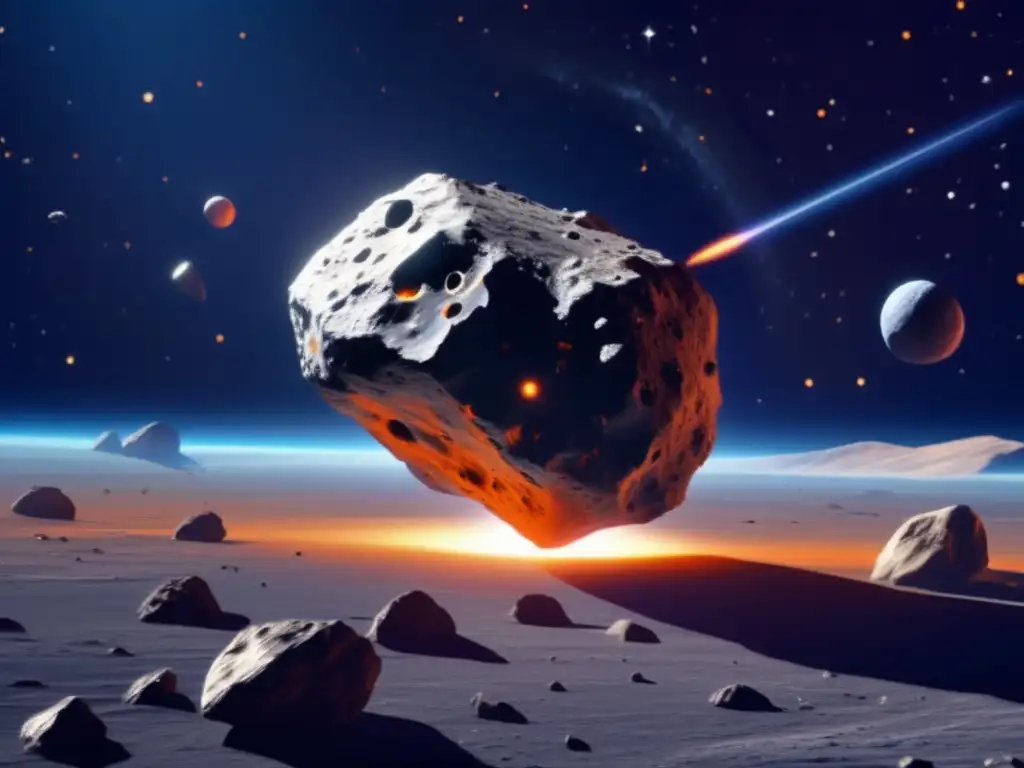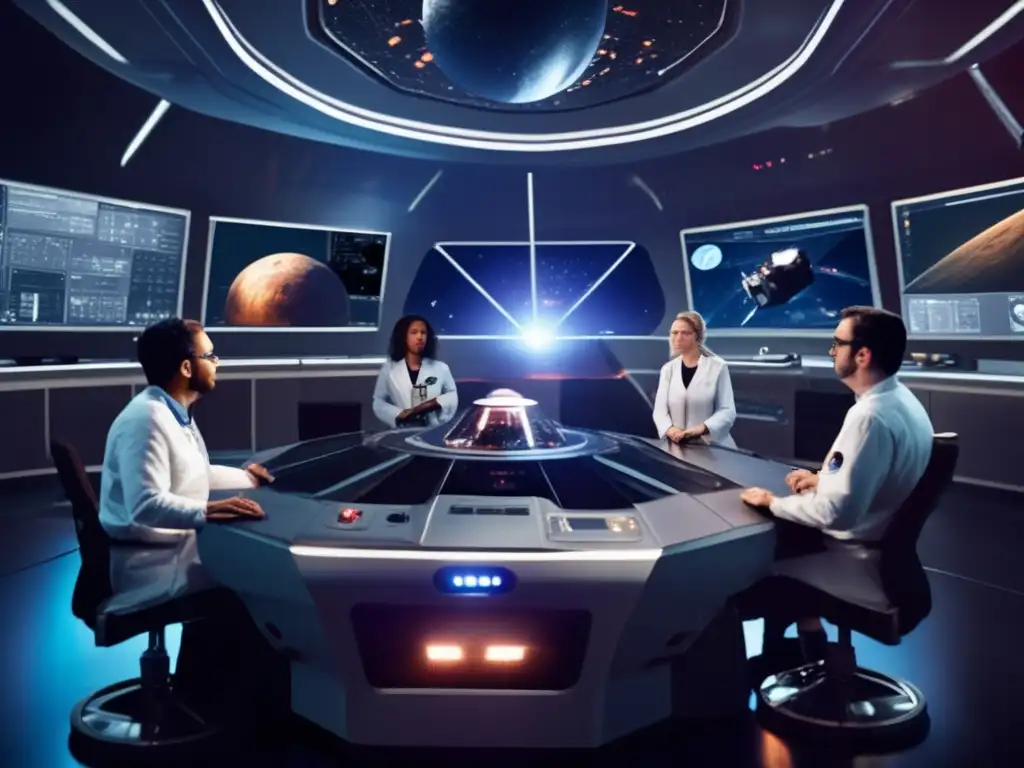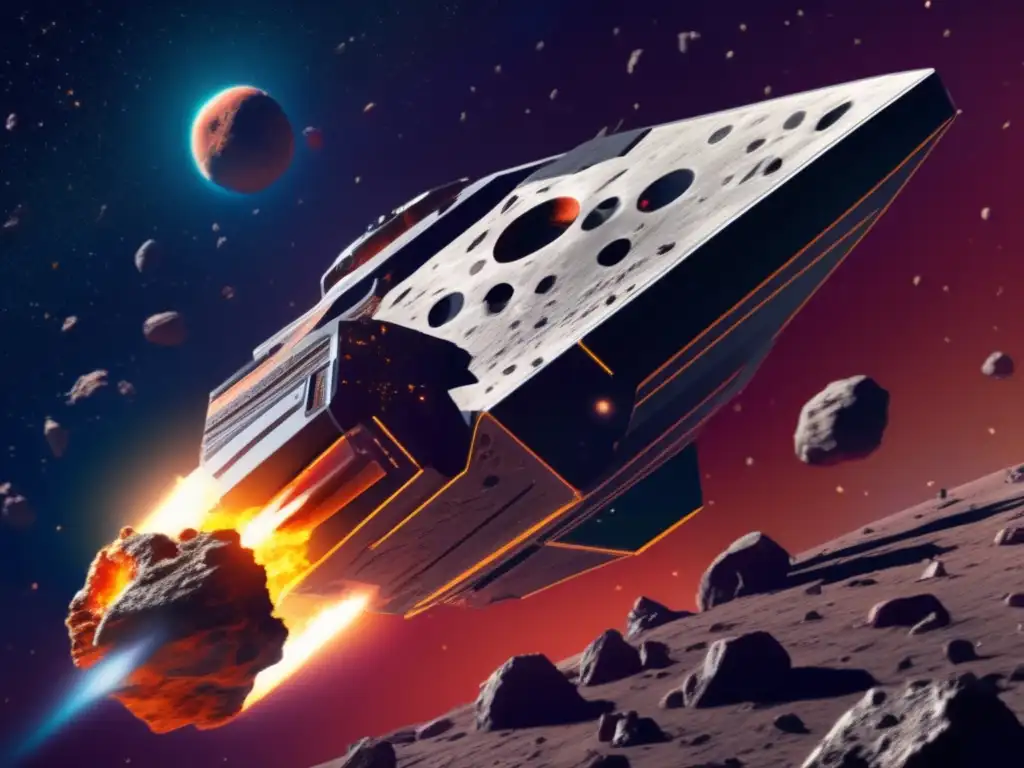Guardians Of Earth: Modern Technology In Asteroid Deflection

Introduction
Asteroids have always fascinated humanity, and their potential threat to our planet has stirred up debates for many years. Nevertheless, thanks to modern technology, we now have the means to monitor and deflect asteroids that pose a risk to Earth. In this article, we'll delve into the exciting world of asteroid deflection using cutting-edge technology.
The Basics of Asteroid Deflection

How can asteroids be deflected?
There are currently three main approaches to deflecting asteroids. The first is to use a kinetic impactor, which involves crashing a spacecraft into the asteroid to change its trajectory. The second approach is the gravity tractor method, where a spacecraft hovering near the asteroid uses its gravitational force to alter its path. Lastly, there's the nuclear option, which involves detonating a nuclear weapon near the asteroid to alter its course.
What is the most effective method for asteroid deflection?
It depends on the size and composition of the asteroid. Kinetic impactors tend to work better for smaller asteroids, while the gravity tractor method is more suitable for larger ones. Nuclear options are still somewhat controversial, and their effectiveness is still under debate.
How early must an asteroid be detected to be deflected?
The earlier the better. Ideally, an asteroid should be detected with enough time to allow for a variety of methods to be tested and applied. However, even a short notice can still provide some options for deflection.
Modern Technology for Asteroid Deflection

Laser Bees
Laser Bees is a concept developed by NASA that involves using a swarm of small satellites equipped with lasers to deflect asteroids. These tiny spacecraft would be sent to the asteroid and would use their lasers to vaporize a small section of its surface, creating a burst of gas that alters its trajectory.
Double Asteroid Redirection Test (DART)
DART is a NASA mission set to launch in 2021. It aims to test the effectiveness of kinetic impactors for asteroid deflection. DART will crash into a smaller asteroid named Didymos' moon and observe the changes to its trajectory.
Asteroid Impact & Deflection Assessment (AIDA)
AIDA is a joint mission between NASA and the European Space Agency (ESA). It comprises two missions, DART and Hera. Hera will be sent to Didymos after DART's impact to measure the changes and collect data on the asteroid's properties.
The Future of Asteroid Deflection

Orbiting Solar Power Plants
Recently, a team of scientists at the University of California proposed the idea of using orbiting solar power plants to deflect asteroids. These plants would use high-power microwaves to vaporize a small portion of the asteroid, creating a plasma that would interact with the asteroid's magnetic field, causing it to change course.
NEO Surveyor
NEO Surveyor is a NASA mission set to launch in 2026 that aims to detect and track as many near-Earth objects (NEOs) as possible. The mission will use an infrared telescope to detect these objects and gather essential data, enabling better asteroid deflection strategies and decisions.
Frequently Asked Questions

-
How often do asteroids collide with Earth?
Asteroid collisions are relatively rare events, but they do occur. According to NASA, they estimate that one asteroid capable of causing significant damage hits the Earth once every few thousand years.
-
How much would it cost to deflect an asteroid?
The cost depends on the size of the asteroid and the method used for deflection. However, ballpark figures suggest that it could range between $500 million to several billion dollars.
-
Could we use asteroids as a source of resources?
Yes. Some scientists believe that mining asteroids for resources such as water, metals, and minerals could be financially viable in the future.
-
What is the biggest asteroid ever to hit Earth?
The largest asteroid impact known to have occurred on Earth was the Chicxulub event. It happened over 65 million years ago and is believed to have wiped out the dinosaurs and two-thirds of all animal and plant life on Earth at the time.
-
What is the likelihood of a catastrophic asteroid impact?
The probability of a catastrophic asteroid impact is low, but the potential consequences are severe. Therefore, it's crucial to continue developing and improving asteroid detection and deflection methods.
Conclusion
Thanks to modern technology, we have the means to detect and deflect asteroids that pose a risk to our planet. While there's still a lot of work to be done, the progress achieved so far is promising. Keep an eye on www.asteroidrealm.com for more information about the fascinating world of asteroids.
Additional Resources

For those interested in delving deeper into the topic, below are some additional resources:
- NASA Planetary Defense - FAQ
- ESA - What is Hera?
- NASA - New Missions to Explore Solar System, Ocean Worlds
- JPL - Laser Bees: NASA Studies Using Robotic Swarms for Space Exploration
 Beyond Sci-Fi: How Humanity Plans To Defend Against Asteroids
Beyond Sci-Fi: How Humanity Plans To Defend Against Asteroids Saving The Planet: Current Approaches In Asteroid Impact Prevention
Saving The Planet: Current Approaches In Asteroid Impact Prevention Planetary Shield: Technologies For Asteroid Defense
Planetary Shield: Technologies For Asteroid DefenseIf you want to discover more articles similar to Guardians Of Earth: Modern Technology In Asteroid Deflection, you can visit the Planetary Defense category.
Leave a Reply

Articulos relacionados: